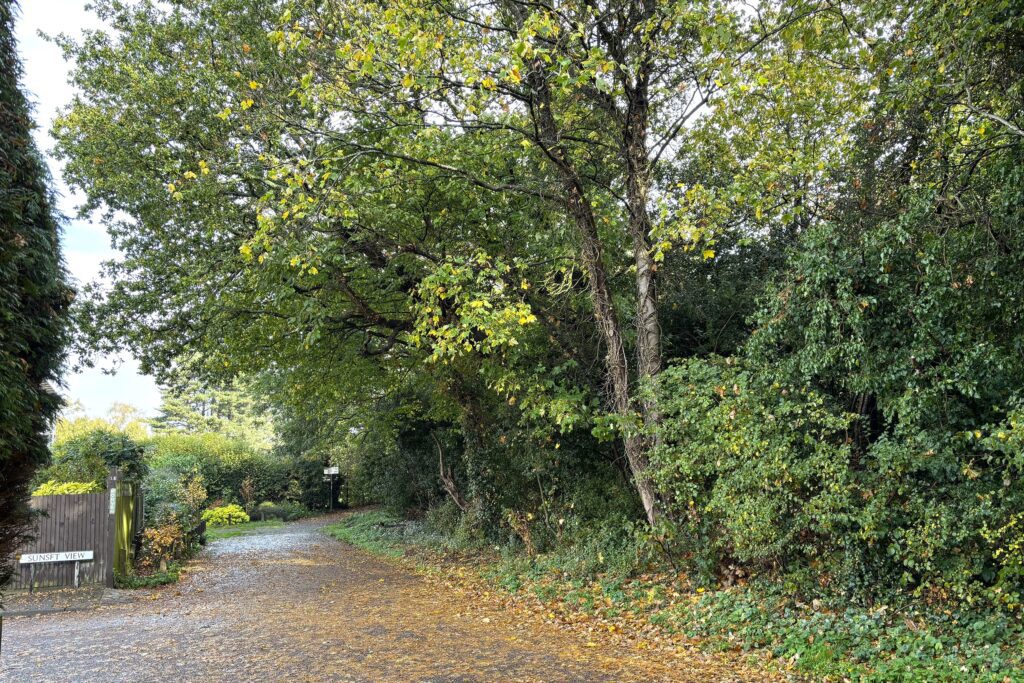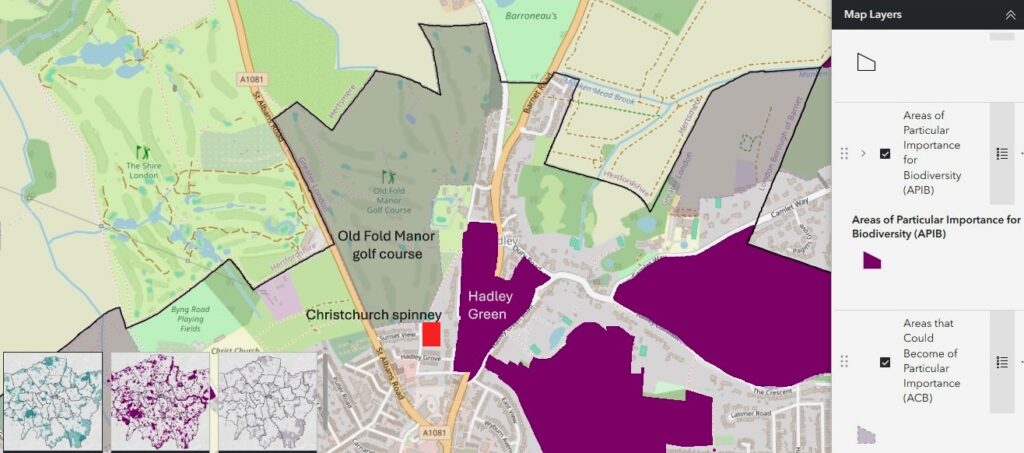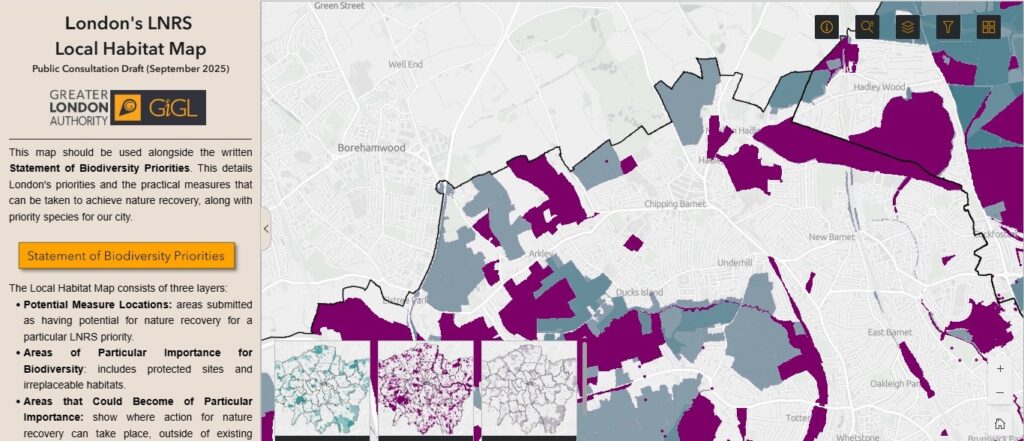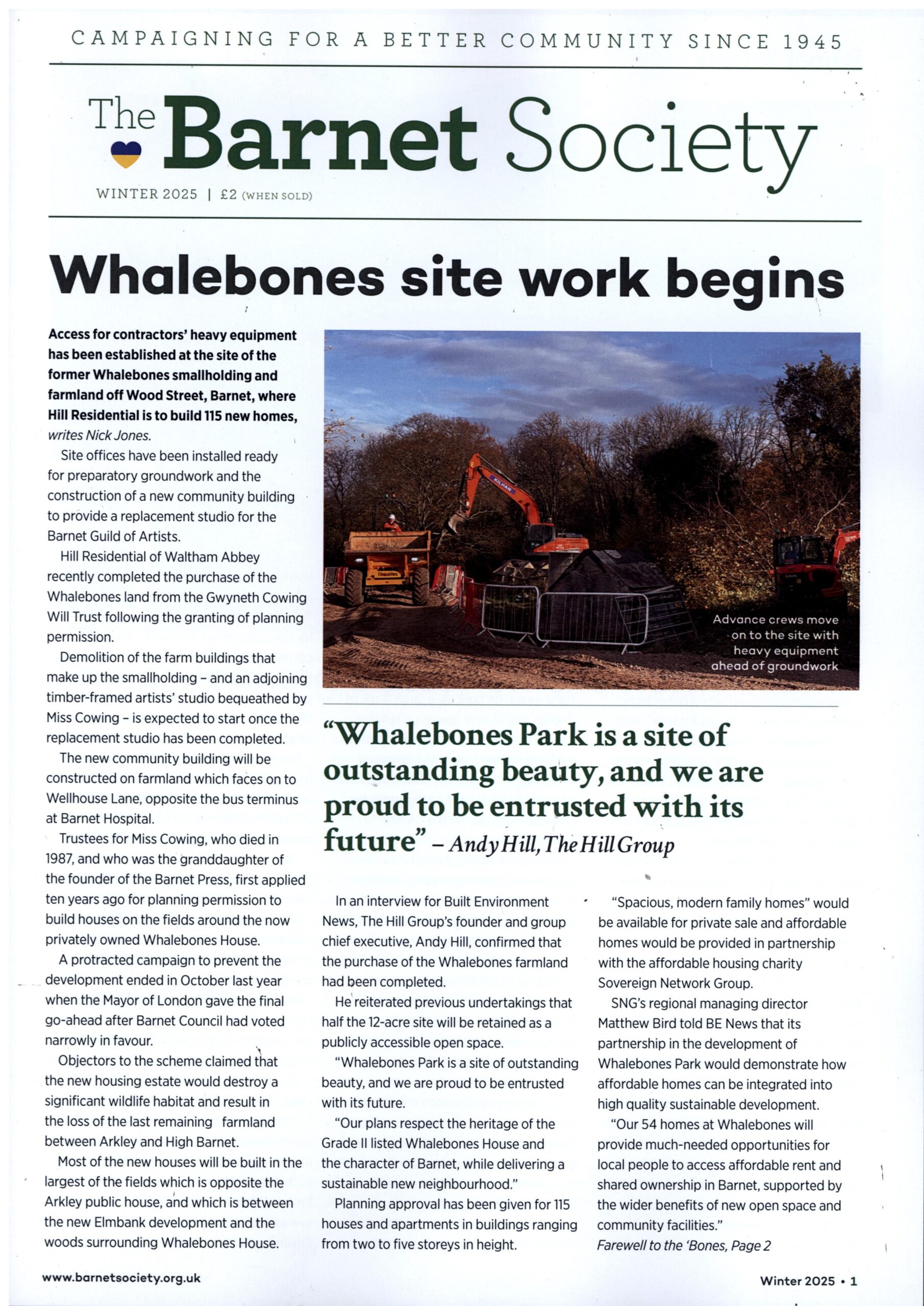Protecting green spaces – how serious are our politicians?

This peaceful spinney in Christchurch Lane is a haven of wildlife less than 200 metres from Barnet High Street – but it’s threatened by new building. How can that be?
Barnet Council declared a Climate and Biodiversity Emergency in 2022. Its recently-adopted Local Plan contains policies and supplementary planning documents specifically to protect green spaces of all kinds.
Mayor Khan has similar planning policies and is currently consulting on London’s first Nature Recovery Plan (LNRS) to reverse biodiversity loss. Surely the spinney’s future is safe?
Worryingly, the answer is no.
Last year the Council authorised the sale of part of the spinney that it owns for £430,000, subject to the buyer obtaining planning consent. Existing covenants on the land restrict development to private residential use. A planning application is expected before long.
The site is mainly well-established woodland with several Tree Preservation Orders but would benefit from sensitive management. Although small in area (0.438 hectare / 1 acre), its ecological value is great because it provides a vital undisturbed ‘green corridor’ for the transit of insects, animals and flying creatures between the Old Fold Manor golf course and Hadley Green, both of which are in the Green Belt.
Local resident Marianne Nix says ‘The spinney is a rich and biodiverse habitat, regularly visited by badgers, foxes, muntjac deer, bats and hedgehogs as well as birds on red and amber conservation list 5.’ Above and below are some of her recent photographs.

The spinney’s location within the Monken Hadley Conservation Area should provide it with statutory protection. But the Barnet Society knows from bitter experience over the Whalebones Estate housing development that the Council can override Conservation Area status if it decides that development would be ‘less than harmful’.

The plan above is based on an interactive map that is a key component of the draft London LNRS. It shows Areas of Particular Importance for Biodiversity (such as Hadley Green – purple on the plan) and Areas that Could Become of Particular Importance (such as Old Fold Manor golf course – sage green on plan).
On it is marked Christchurch spinney, highlighting its value of as a strategic link between the golf course and green. Unfortunately, the spinney itself is not designated in the LNRS.
Mayor Khan’s draft explains the purpose of an LNRS, identifies six overarching priorities for London and describes in impressive detail the range of landscape characteristics and wildlife species that deserve protection. It’s a welcome framework for the guidance of future development across London.
Development of the LNRS has enabled Council Biodiversity Officers to check the existing data. It turned out that much was inaccurate, out of date, incorrect or non-existent. It has now been updated and significant effort has gone into identifying potential sites of particular importance and for taking action. So thanks to the LNRS, we now have a better baseline for our local nature.
There’ll be a chance to suggest new locations such as Christchurch spinney when the LNRS is next reviewed, which will take place every three to 10 years (the government will advise on the timeframe). Until then, the Council’s duty is to protect the spinney.
In 2022, Barnet Labour’s Green Manifesto promised to ‘Protect ALL existing green spaces in the Borough’. In the May 2026 local election Barnet voters will be able to hold Councillors to account.
You can comment on the draft LNRS here. The deadline is Wednesday 29 October 2025.
Below: LNRS map extract showing designated areas in Chipping Barnet parliamentary constituency

Tags: #Barnet Council #Biodiversity #Chipping Barnet #Environment #High Barnet #Nature Recovery #Planning


Precious woodland wildlife habitat in Barnet has been destroyed in the past week. The land, which borders on the rear gardens of properties in Stanhope Rd, Dormer Close, Palmer Gardens and Chesterfield Rd in Ducks Island was as far as we know recently sold by Barnet Council to the Eleanor Palmer Trust who has sent in bulldozers and cleared the land of more than 20 mature Oak, Ash and Cherry trees. No planning application for development is shown on the planning portal so the land has been cleared with no tree or ecological surveys. Labour Ward Councillor Zarha Beg has been helping residents unravel the mess so let’s hope this politician is serious about protecting our green spaces even if it is too late in this case.
It seems outrageous that our council is quietly sell off green spaces to organise who are then going to level it without planning permission. I trust the Labour councillors will get to the bottom of this as a matter of urgency.
Has anyone asked what our local MP plans to do on the matter? His current track record seems to be to not want to do or say anything that in anyway goes against the ‘growth’ agenda.
“A group of local volunteers are campaigning to save a precious parcel of woodland on Christchurch Lane EN5 4LB, in High Barnet. Please help us by signing the petition.” https://www.savechippingbarnetwoodland.org
The destruction of this woodland haven would be a senseless violation carried out for pure greed & profit.
For what…a luxury residence for wealthy individuals not exactly aiding the housing shortage in this country is it!